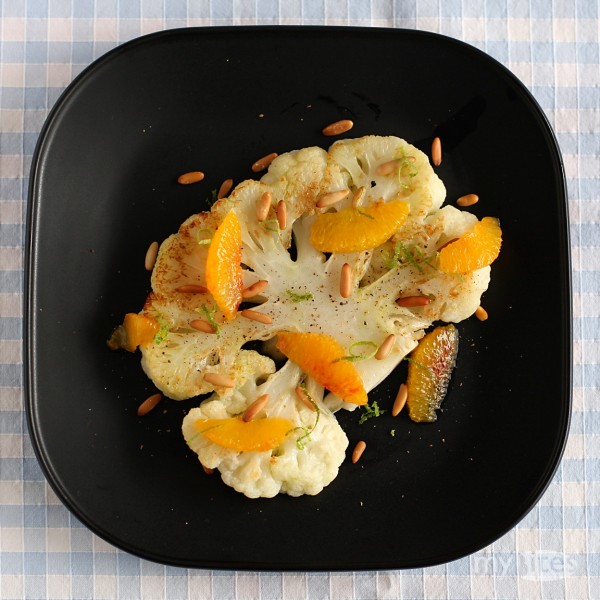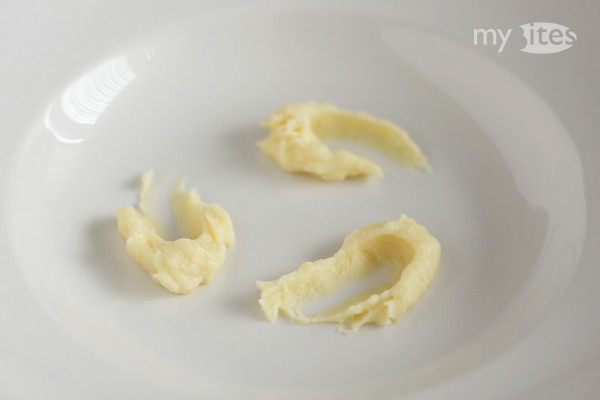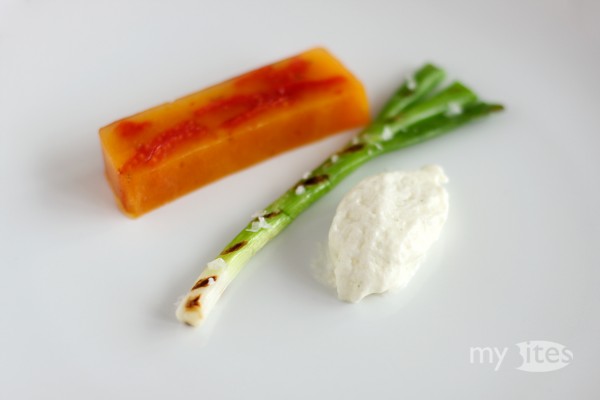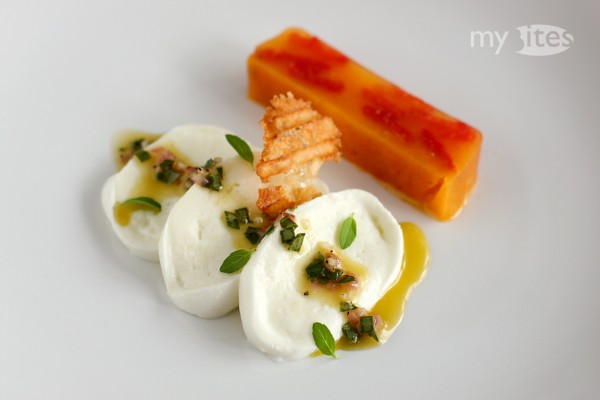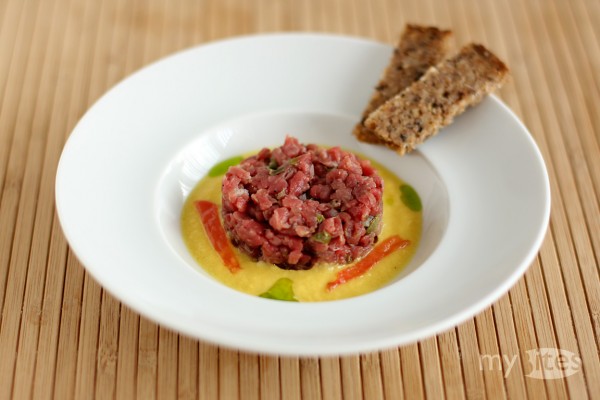It’s very hard to find really bloody oranges. At the market here in Erlangen two different kinds of blood oranges are being sold: one half-blood orange called “Tarocco” and a full-blood orange named “Moro”. In the last years and during this winter as well, they were both pretty pale inside, containing only a few red pigments – if any at all. I usually try to determine the bloodiness of an orange by the color of the skin, but unfortunately a red pigmented skin doesn’t guarantee a deep red interior. Since I don’t know any better method, finding really red blood oranges remains a kind of lottery. The statistics for this current winter season are pretty disillusioning: only 1 of 20 blood oranges was truly deep red inside. I planned to use red blood oranges for this vegan dish too, but unfortunately the oranges I bought had yet again only very few red spots. Irrespectively of their color, they fulfilled their means of use by adding sourness and freshness to the dish.
Tag Archives: appetizer
Chestnut-filled Cabbage with Sunchoke and Cabbage-Tapioca
Nana, a vegetarian friend of mine, announced a vegetarian month, which aims to motivate people to prepare and eat a meatless meal at least once during this month. Besides eating less meat, hopefully the participants will also think a little bit about the vegetarian diet and probably notice that meat does not need to be present on the plate every day. All submitted recipes participate in a contest, where the winner gets an invitation to nana for a vegetarian dinner. Originating from nana’s call for recipes, I took the opportunity to give a thought not only about the vegetarian, but also about the vegan diet.
Pigeon Breast with Quince Sauce and Autumn Vegetables
I wondered why red or white wine is usually added to reduced sauces. Usually the wine is allowed to cook off completely, so in most cases – as long as you’re not cooking specifically a red wine sauce – wine is not so much added for its taste than rather for its acidic component. Another function of the wine is to scrape off the brown roasted parts from the bottom of the pot, but for this purpose water works perfectly well too. Instead of the wine I had the idea to add some quince as an acidic component. Cooking quince over a long time magically enhances its flavor, so I thought it would work ideally in a sauce too, since the the basic stock had to be cooked for several hours. The quince worked really well in the sauce, so if you have any problems with adding alcohol to a sauce – although the alcohol will cook off completely – during autumn you can add some fresh quince instead.
Tomato Terrine, Goat Cheese Espuma and Grilled Spring Onion
If you plan to make a terrine say for 4 guests, you’ll always have to deal with leftovers due to form sizes and minimum amounts from which upwards terrines make sense. For example from this tomato terrine you can cut 14 to 16 slices, much more than you need for the twisted caprese. Leftovers, or generally food should never be wasted, so here’s another idea for an appetizer with the tomato terrine.
Twisted Caprese
August and the first weeks of September are the best time for incredibly flavorful local tomatoes. During the season you can find a wide selection of sizes, colors and shapes at the local market, which irresistibly invite you to explore the wide variety. Tomatoes are very versatile: you can broil, roast, grill, stew, fry, dry or simply use them raw e.g. in a salad. One of the most famous and popular salads with tomatoes is probably the Italian Caprese consisting of fresh tomatoes, mozzarella (from buffalo milk), basil, some olive oil and balsamic vinegar. In my version here I integrated the idea of a tomato terrine inspired by a recipe of Tanja Grandits. In her cookbook she called it tomato cassata and used some vanilla too, which I skipped. Instead of red tomato juice I pureed and sieved yellow tomatoes, which added a nice and vibrant color to the final dish.
Steak Tartare with Bell Pepper Coulis, Mustard Tomato and Dill Oil
Steak tartare appears quite often on menus in Hungarian restaurants. Usually the beef loin is matured covered in oil and some spices and herbs. This is a necessary step – unfortunately meat is not allowed to be aged long enough because of regulations of the health department. The beef is then minced using a grinder to order and usually served already mixed with spices, onions, garlic, an egg yolk and toast. This is the classic version you get in Hungary, but nowadays more elaborate tartares start to show up. Recently, I had a steak tartare at the Winekitchen, where the beef was finely chopped to order (by hand!) and served with fresh warm bread and mayonnaise made of pumpkin seed oil. It inspired me to create my own summer version of steak tartare.
